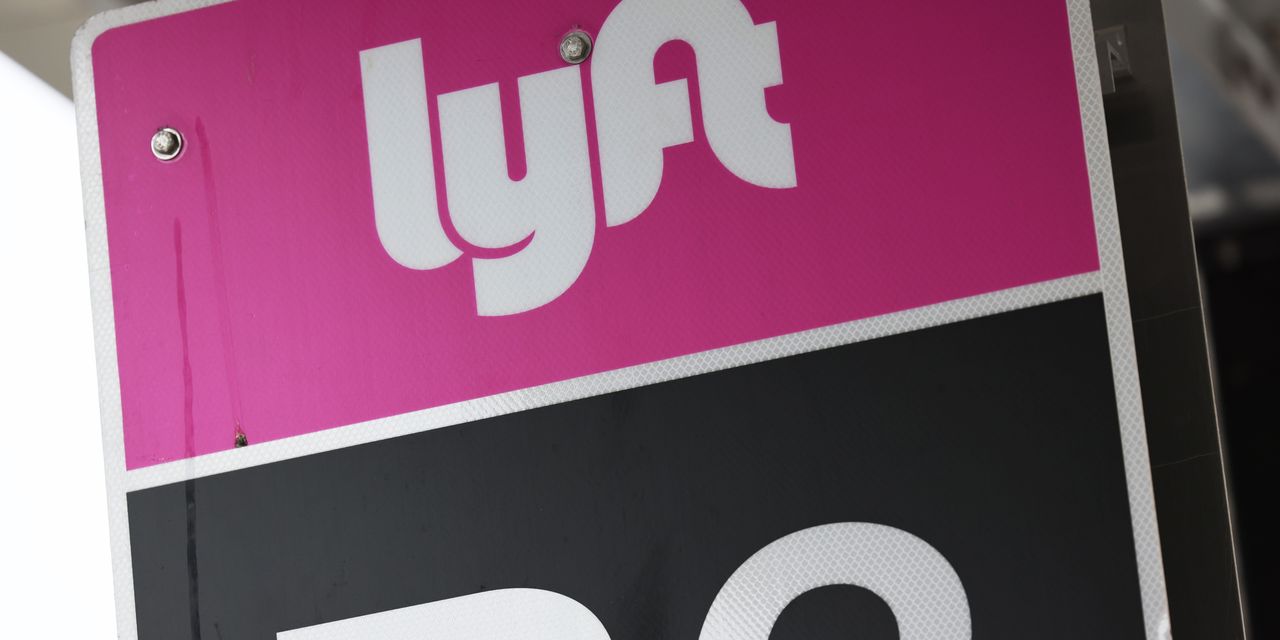Lyft Inc. on Wednesday reported third-quarter results that beat Wall Street’s estimates and forecast fourth-quarter sales growth that was better than expected, helped by growth in back-to-school-season demand and a push to send workers back to offices.
However, shares of Lyft
LYFT,
fell about 2% after hours.
The company reported the results as it tries to expand its ride services to compete with larger rival Uber Technologies Inc., and as it benefits from strong demand from a broader rebound in travel. But that demand has run up against concerns about higher prices, including for gasoline, and the return of student-loan payments, and it introduced new metrics in Wednesday’s earnings release.
However, executives said they hadn’t seen much impact from either rising gas prices or student-loan payments. And they said gains seen in October have continued.
“We’ve just had a terrific October,” Chief Financial Officer Erin Brewer told MarketWatch. “We’ve set records on both the driver side in terms of hours and on the rider side for Halloween week in particular, and we’ve continued to see that momentum.”
Lyft reported third-quarter net loss of $12.1 million, or 3 cents a share, compared with a loss of $422.2 million, or $1.18 a share, in the same quarter last year. Revenue rose 10% year over year to $1.16 billion. Adjusted profit came in at 24 cents a share.
Analysts polled by FactSet expected Lyft to report adjusted earnings per share of 15 cents, on revenue of $1.14 billion.
Rides grew 20% to 187 million during the quarter. Active riders — broadly, riders who take at least one ride during a quarter — grew 10% to 22.4 million. Across the 70 regions targeted by the platform for the back-to-school season, rideshares jumped 25%, reflecting “a surge in new and returning riders and drivers.”
Lyft said it expected fourth-quarter sales to grow “mid-single-digits quarter over quarter.” That was a bit higher than the 3.5% growth forecast by FactSet. Executives said they expected fourth-quarter gross bookings, a new metric for the company measuring the total dollar amount of transactions on the Lyft platform, of around $3.6 billion to $3.7 billion.
The company has expanded services in an effort to set itself apart from Uber
UBER,
which reported results on Tuesday that got a boost from strong summer-season and travel demand. Uber has generally been favored by analysts and investors. who have sent shares 97% higher so far this year. Lyft’s stock is down around 3% this year.
Lyft has retrenched this year in an effort to keep up, laying off staff to cut costs and trying to keep its ride-hailing prices below Uber’s. It has launched a new service that tries to pair women or non-binary riders and drivers in 55 markets, as well as a service that helps businesses cover costs for rides.
Chief Executive David Risher said that women drivers only represent around 23% of the company’s total, and account for around 15% of the hours.
“As we can increase our women drivers closer to 30, 40, 50 percent, we can really unlock incredible growth,” he told MarketWatch. “Those are incremental drivers that then unlock incremental riders as well.”
Oppenheimer analysts this month, citing third-party data, found that Uber ceded “some share” to Lyft. But they said Lyft was “leaning more aggressively into concessions” on trips to the office to pick up that market share. D.A. Davidson analyst Tom White, examining airport and intra-city trips in the nation’s 20 biggest cities, found that Uber’s pricing had started to more closely resemble Lyft’s at the end of September.
While Uber has a food-delivery business and a freight business, and food-delivery app DoorDash Inc.
DASH,
has expanded into grocery delivery, Lyft has largely stuck to rides.
However, both Lyft and Uber are trying to expand in-app and rooftop advertising, which other businesses, like retailers, pay for to attract riders tapping away on their phones on their way to their destination. Lyft launched in-app advertising during the third quarter.
Risher said that while that business is still small, it could bring in “hundreds of millions” of dollars in revenue longer-term, but cautioned against hard projections this early. And he cited the potential for riders to take in ads differently while in a car.
“When they’re in the car, it’s quite a different thing,” he said. “It’s actually quite intimate, when you’re in the car going to a restaurant or to a coffee shop or to a movie.”
“You’re in a place where, frankly, you’re open to suggestions,” he continued. “Pre-order that popcorn, buy that Coca-Cola before you get to the movie. Maybe take an extra stop at the coffee shop on your way to work. These are really powerful opportunities.”
Read the full article here










